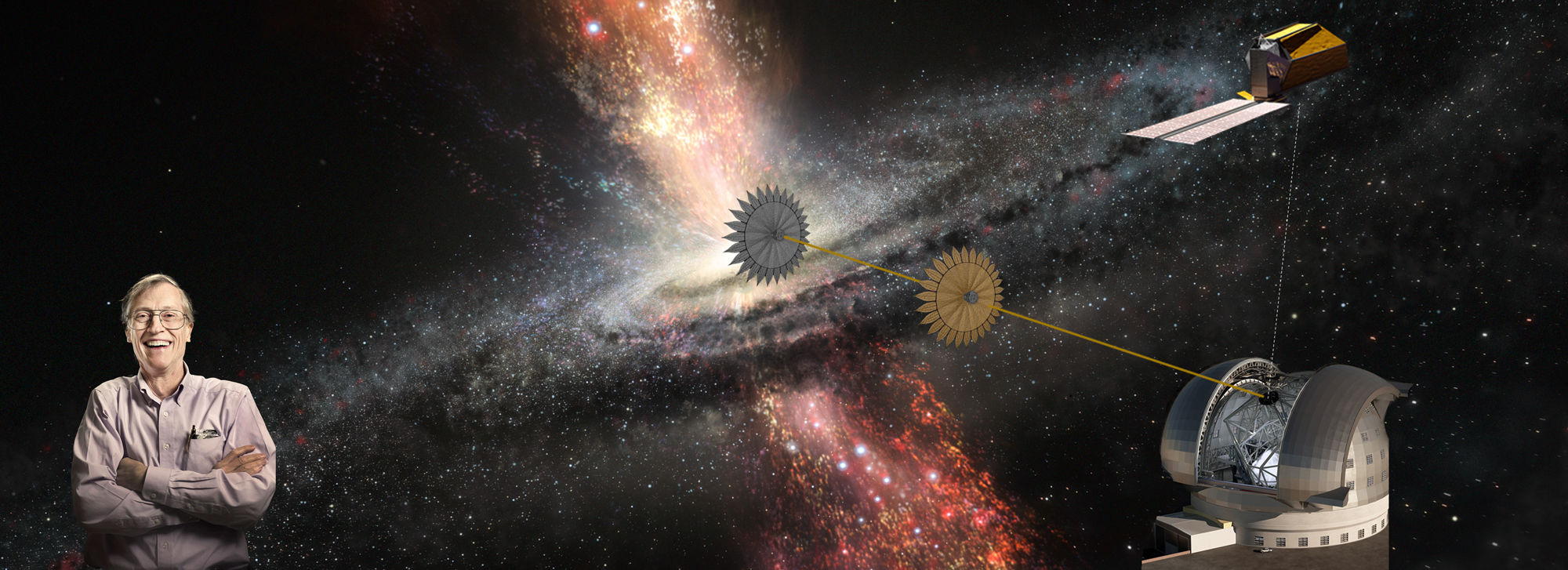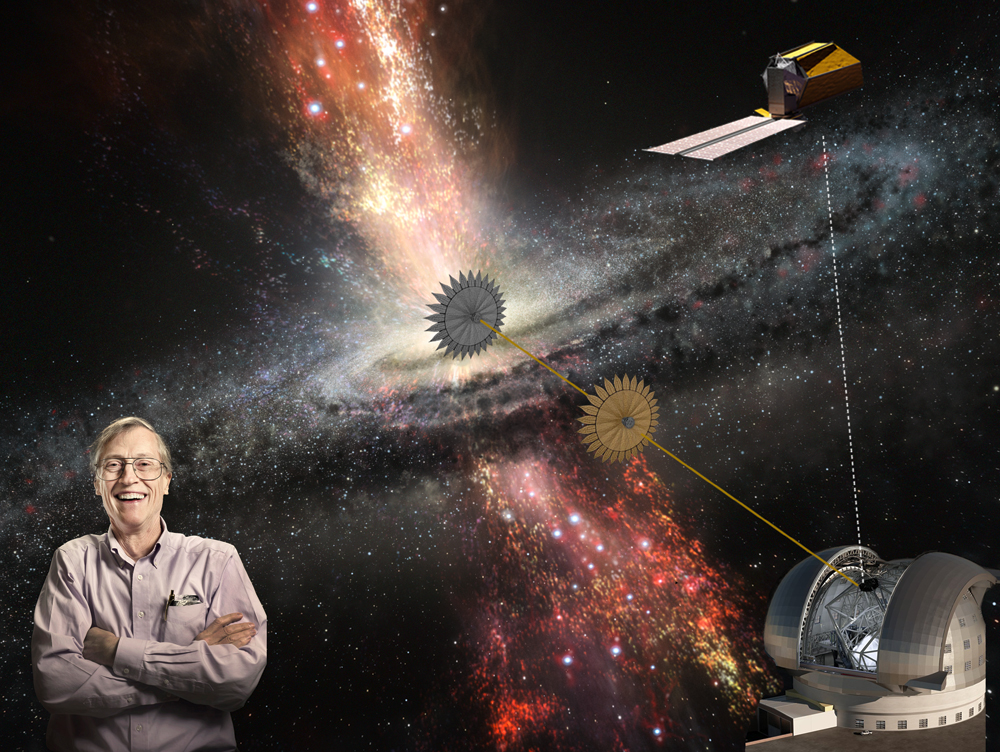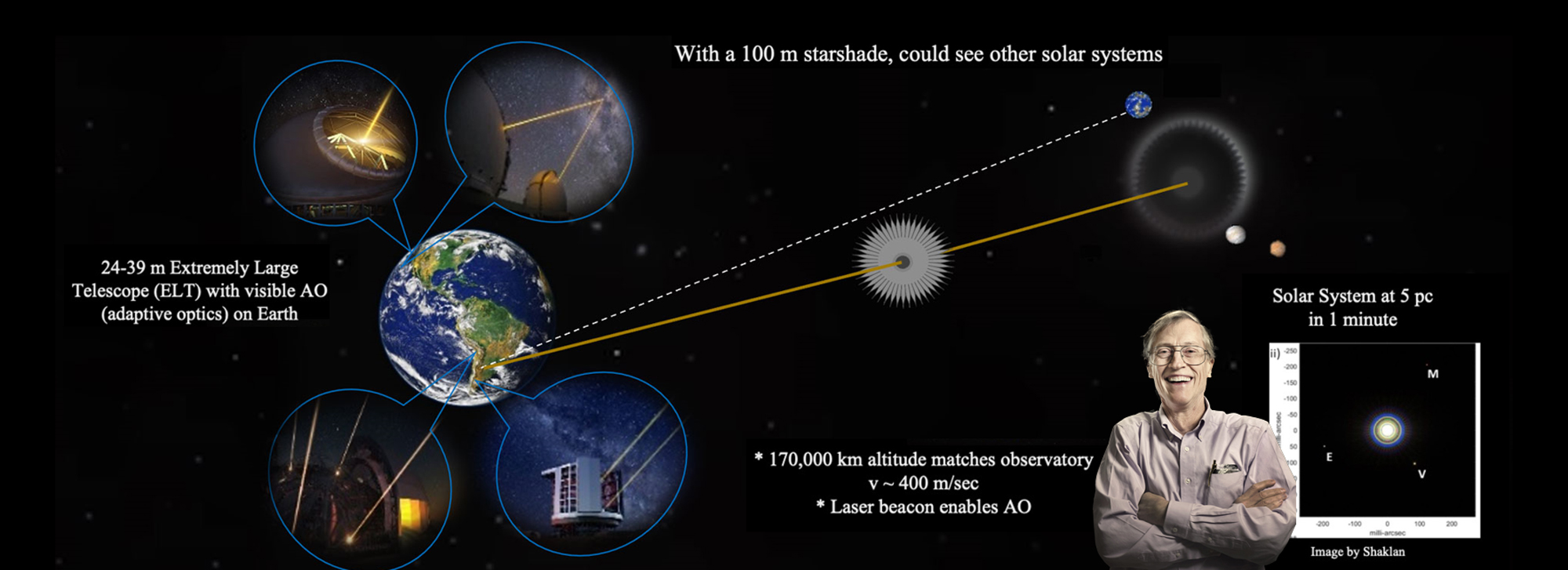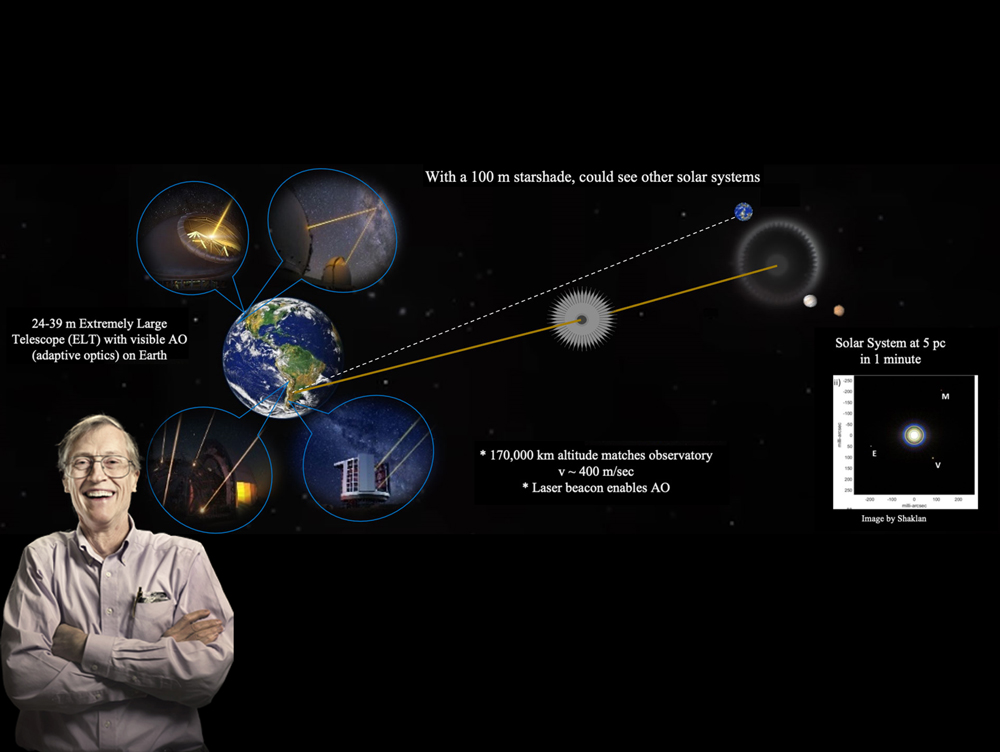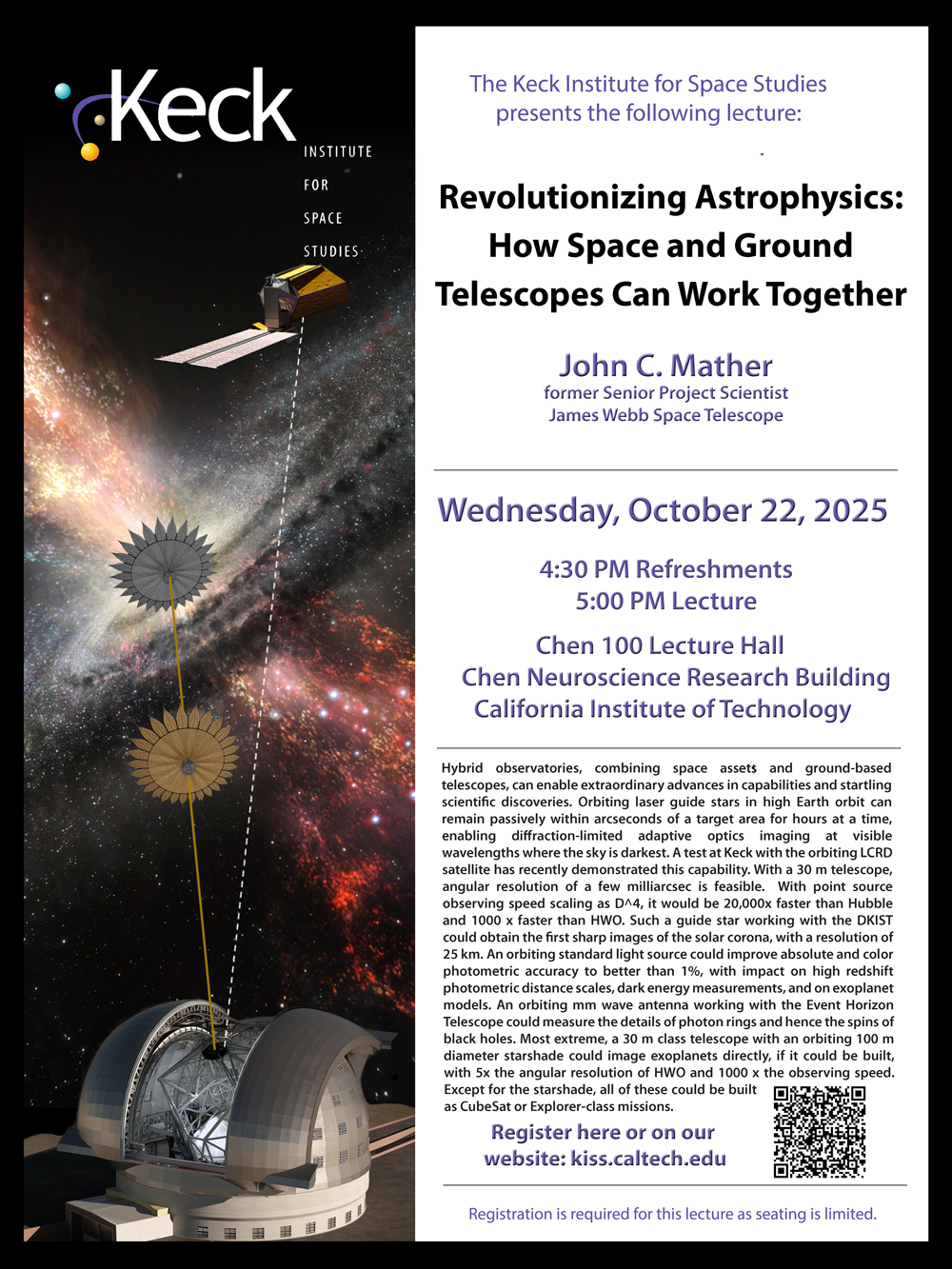Revolutionizing Astrophysics: How Space and Ground Telescopes Can Work Together
Speaker: John C. Mather
former Senior Project Scientist, James Webb Space Telescope
This lecture has been postponed due to the U.S. federal government shutdown.
Abstract:
Hybrid observatories, combining space assets and ground-based telescopes, can enable extraordinary advances in capabilities and startling scientific discoveries. Orbiting laser guide stars in high Earth orbit can remain passively within arcseconds of a target area for hours at a time, enabling diffraction-limited adaptive optics imaging at visible wavelengths where the sky is darkest. A test at Keck with the orbiting LCRD satellite has recently demonstrated this capability. With a 30 m telescope, angular resolution of a few milliarcsec is feasible. With point source observing speed scaling as D^4, it would be 20,000x faster than Hubble and 1000 x faster than HWO. Such a guide star working with the DKIST could obtain the first sharp images of the solar corona, with a resolution of 25 km. An orbiting standard light source could improve absolute and color photometric accuracy to better than 1%, with impact on high redshift photometric distance scales, dark energy measurements, and on exoplanet models. An orbiting mm wave antenna working with the Event Horizon Telescope could measure the details of photon rings and hence the spins of black holes. Most extreme, a 30 m class telescope with an orbiting 100 m diameter starshade could image exoplanets directly, if it could be built, with 5x the angular resolution of HWO and 1000 x the observing speed. Except for the starshade, all of these could be built as CubeSat or Explorer-class missions.
Speaker's Biography:
Dr. John C. Mather is a Senior Astrophysicist and was the Senior Project Scientist for the James Webb Space Telescope (JWST) at NASA’s Goddard Space Flight Center. Since the project start in 1995 until 2023, he led the JWST science teams. As a postdoctoral fellow at NASA’s Goddard Institute for Space Studies he led the proposal efforts for the Cosmic Background Explorer (74-76), and came to GSFC to be the Study Scientist (76-88), Project Scientist (88-98), and the Principal Investigator for the Far IR Absolute Spectrophotometer (FIRAS) on COBE. With the COBE team, he showed that the cosmic microwave background radiation has a blackbody spectrum within 50 parts per million, confirming the expanding universe model to extraordinary accuracy. The COBE team also made the first map of the hot and cold spots in the background radiation (anisotropy), the spots which nucleated the formation of galaxies. Dr. Mather received the Nobel Prize in Physics (2006) with George Smoot, for the COBE work.
